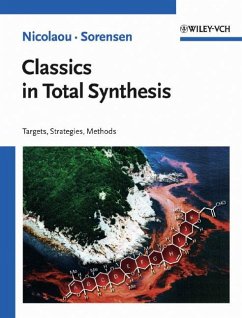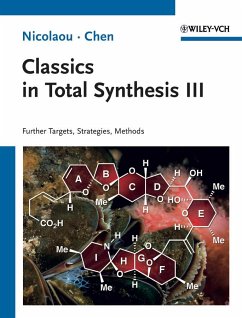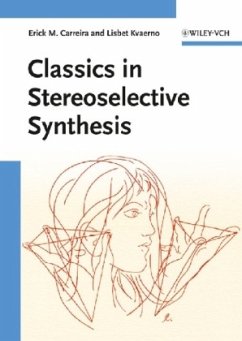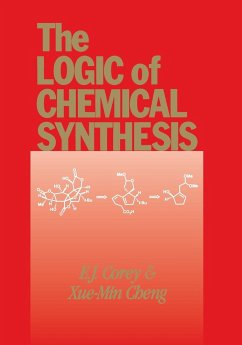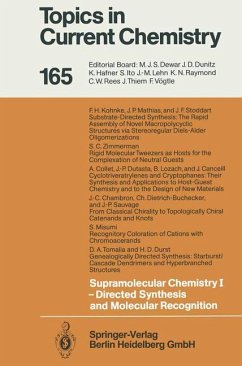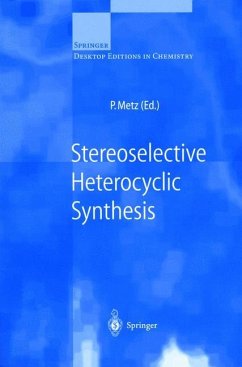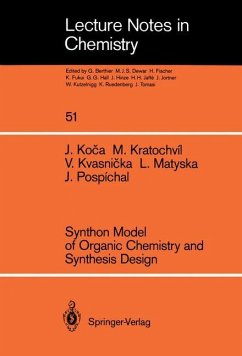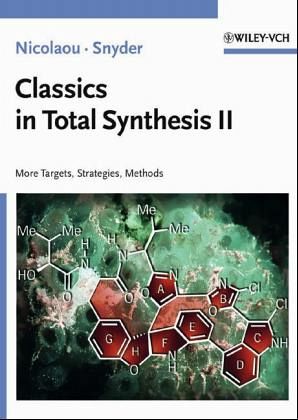
Classics in Total Synthesis II, w. CD-ROM
More Targets, Strategies, Methods. Forew. by E. J. Corey
Versandkostenfrei!
Versandfertig in 1-2 Wochen
119,00 €
inkl. MwSt.

PAYBACK Punkte
0 °P sammeln!
Classics in Total Synthesis II is the long awaited sequel to Classics in Total Synthesis. In this highly welcomed new volume, K. C. Nicolaou and Scott A. Snyder discuss in detail the most impressive accomplishments in natural product total synthesis during the 1990s and the first years of the 21st century.
· domino reactions, cascade sequences, biomimetic strategies, and asymmetric catalysis are systematically developed through the chosen synthesis
· cutting edge synthetic technologies are discussed in terms of mechanism and scope
· new reactions, such as olefin metathesis, are presented in mini-review style
· abundant references are given for further reading
· a CD with useful teaching material for lecturers
Graduate students, educators, and researchers in the fields of synthetic and medicinal chemistry will wish to have a copy of this book in their collection as an indispensable companion that both augments and supplements the original Classics in Total Synthesis.
· domino reactions, cascade sequences, biomimetic strategies, and asymmetric catalysis are systematically developed through the chosen synthesis
· cutting edge synthetic technologies are discussed in terms of mechanism and scope
· new reactions, such as olefin metathesis, are presented in mini-review style
· abundant references are given for further reading
· a CD with useful teaching material for lecturers
Graduate students, educators, and researchers in the fields of synthetic and medicinal chemistry will wish to have a copy of this book in their collection as an indispensable companion that both augments and supplements the original Classics in Total Synthesis.
Endlich ist er da! Der zweite Band der "Classics in Total Synthesis" von K. C. Nicolaou und S. Snyder. Eine Vielzahl neuer und herausragender Totalsynthesen von zahlreichen ausgezeichneten Synthetikern werden in diesem Buch vorgestellt.
Jede Synthese wird zunächst retrosynthetisch betrachtet und anschliessend werden die einzelnen Reaktionsschritte detailliert diskutiert. Natürlich werden auch alternative Methoden aufgezeigt, mögliche experimentelle Probleme erörtert und schliesslich ausführlich die weiterführender Literatur präsentiert.
Das hervorragende didaktische Konzept wird durch den geschickten Einsatz von Graphiken und Schemata abgerundet: Alle wichtigen Details, wie elegante Reaktionsfolgen oder asymmetrisch durchgeführte Schritte sind durch farbig unterlegte Kästen hervorgehoben. Ebenfalls sind wie beim Vorgänger die wichtigsten Zwischenstufen nochmals in der Randspalte aufgeführt und die beigefügte CD enthält dazu nützliches Unterrichtsmaterial für Professoren und Dozenten.
Kein fortgeschrittener Student und kein Organiker wird an diesem Buch vorbeikommen. Es ist einfach ein Muss!
Jede Synthese wird zunächst retrosynthetisch betrachtet und anschliessend werden die einzelnen Reaktionsschritte detailliert diskutiert. Natürlich werden auch alternative Methoden aufgezeigt, mögliche experimentelle Probleme erörtert und schliesslich ausführlich die weiterführender Literatur präsentiert.
Das hervorragende didaktische Konzept wird durch den geschickten Einsatz von Graphiken und Schemata abgerundet: Alle wichtigen Details, wie elegante Reaktionsfolgen oder asymmetrisch durchgeführte Schritte sind durch farbig unterlegte Kästen hervorgehoben. Ebenfalls sind wie beim Vorgänger die wichtigsten Zwischenstufen nochmals in der Randspalte aufgeführt und die beigefügte CD enthält dazu nützliches Unterrichtsmaterial für Professoren und Dozenten.
Kein fortgeschrittener Student und kein Organiker wird an diesem Buch vorbeikommen. Es ist einfach ein Muss!




